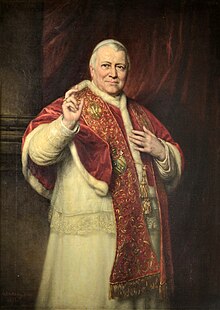Our Lady of Luxembourg
This statue of the Madonna and Child is vested in imperial regalia and is widely venerated as a national and patriotic symbol enshrined at the Notre-Dame Cathedral, Luxembourg.
Accordingly, the Luxembourgish peoples deeply honor the Blessed Virgin Mary under this particular title and imagery due to the longstanding belief that their national independence and sovereignty was tied to the religious devotion fostered by this image along with the assent of the Luxembourg royal families from the yoke of Germany.
[3] The devotion spreads not only to the historical provinces of Luxembourg in Lorraine or Belgium but also beyond the oceans as in the United States[4] and even India, helped by the work of Jesuit missionaries.
In addition, the style and the chiseling technique would indicate that the sculptor would have come from the greater Germanic region, and not from Flanders, Belgium or Champagne, France as was long assumed by pious legend.
Following a medieval custom that was long preserved in Spain, the statue was dressed in richly embroidered and ornamented clothes, in particular a vast cloak in the form of a cape or cope that descended to the ground and concealed her feet placed on the Moon.
The statue is first mentioned in an inventory document dated on 8 December 1624, the day when it was carried in procession outside the fortifications by the college students led by Father Jacques Brocquart, a Jesuit priest under the invocation of "Our Lady of Victory".
In 1639, the first Book of Miracles mentions answered prayers and healings that took place, and to cope with the influx of pilgrims, the statue was brought for a period of eight days from the Glacis to the chapel of the Jesuit college inside the city.
An additional base was made for her with the words Consolatrix afflictorium ora pro nobis, and she then became "Our Lady, Consoler of the Afflicted".
After the election of Our Lady the Consoler as patron saint of the city in 1666 and as patron-protector of the Duchy of Luxembourg in 1678, the statue was kept in the chapel of the Jesuit College.
Since 1766 it has been placed during the Octave on a special votive altar in the rocaille style, made of wrought iron and richly decorated.
Luxembourgish painter Michel Engels depicted a romantic version of the Consolatrix Afflictorum as the Allegorie de la Patria above the city of Luxembourg, showing that "it is under her watchful and protective eye that the nation achieved its political liberation".
[11] Ech hunn dech eenzeg gier Däin Numm ass mir gegruewen An d'Hierz bis an de Kier Däin Numm ass mir gegruewen An d'Hierz bis an de Kier I love you more than all Your name is deeply graven Into my heart and soul Your name is deeply graven Into my heart and soul Originating from Mullendorff, “O Mamm, leif Mamm do uewen” won citizenship at the Cathedral of Luxembourg and was set to music by P. A.
[12] Léif Mamm, ech weess et net ze son was composed by Luxembourgish priest Josef Biwer in the first half of the twentieth century.





